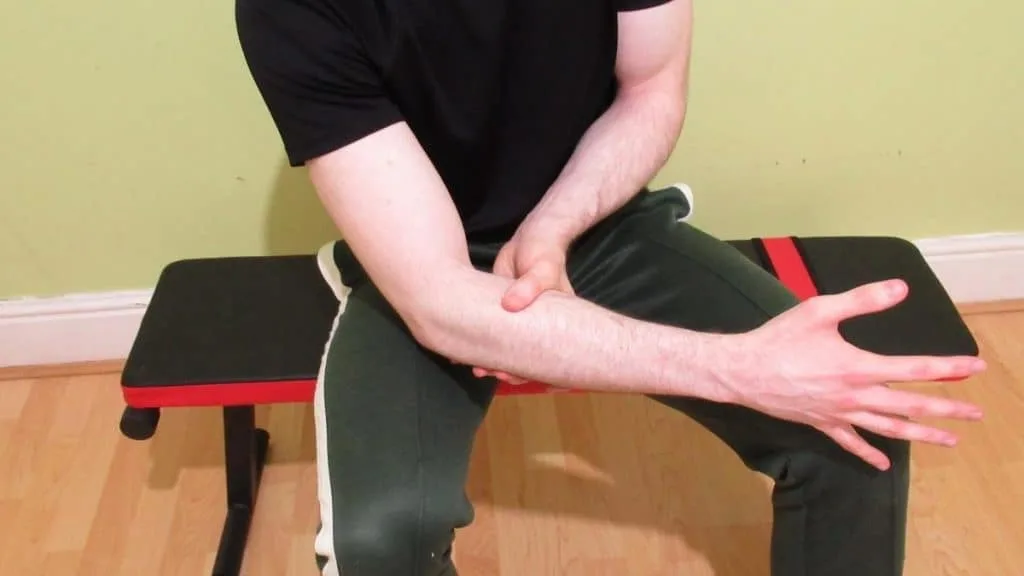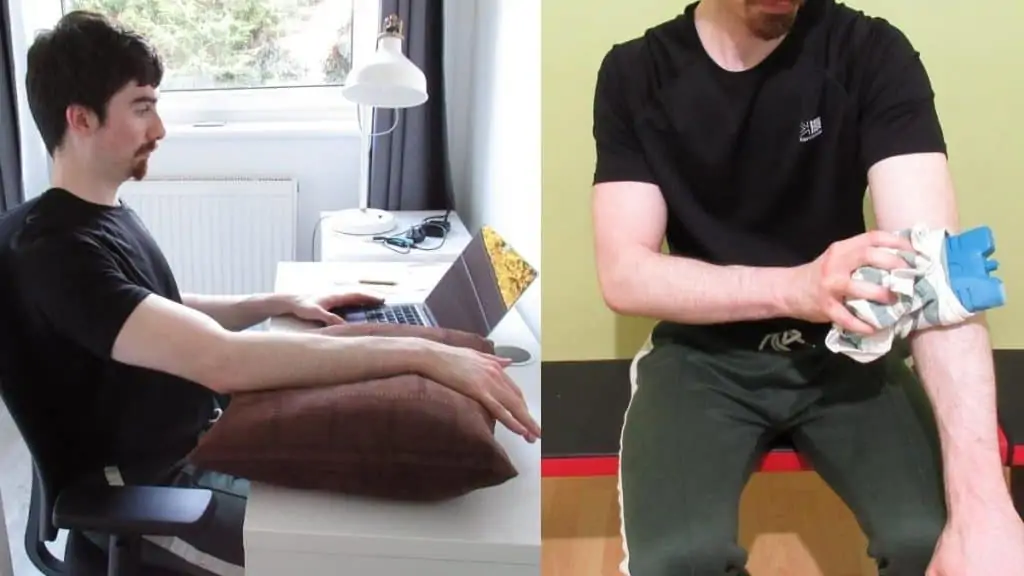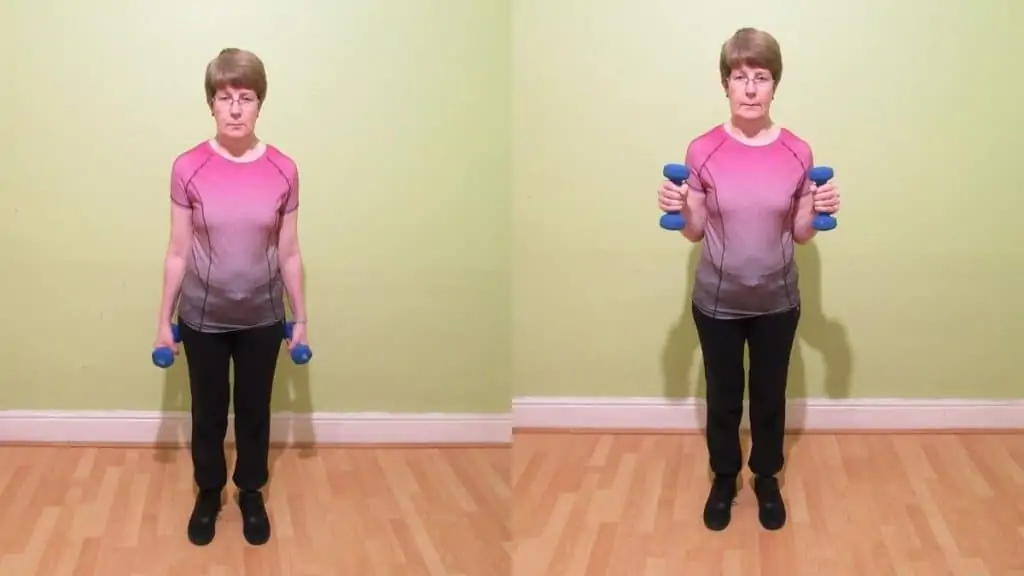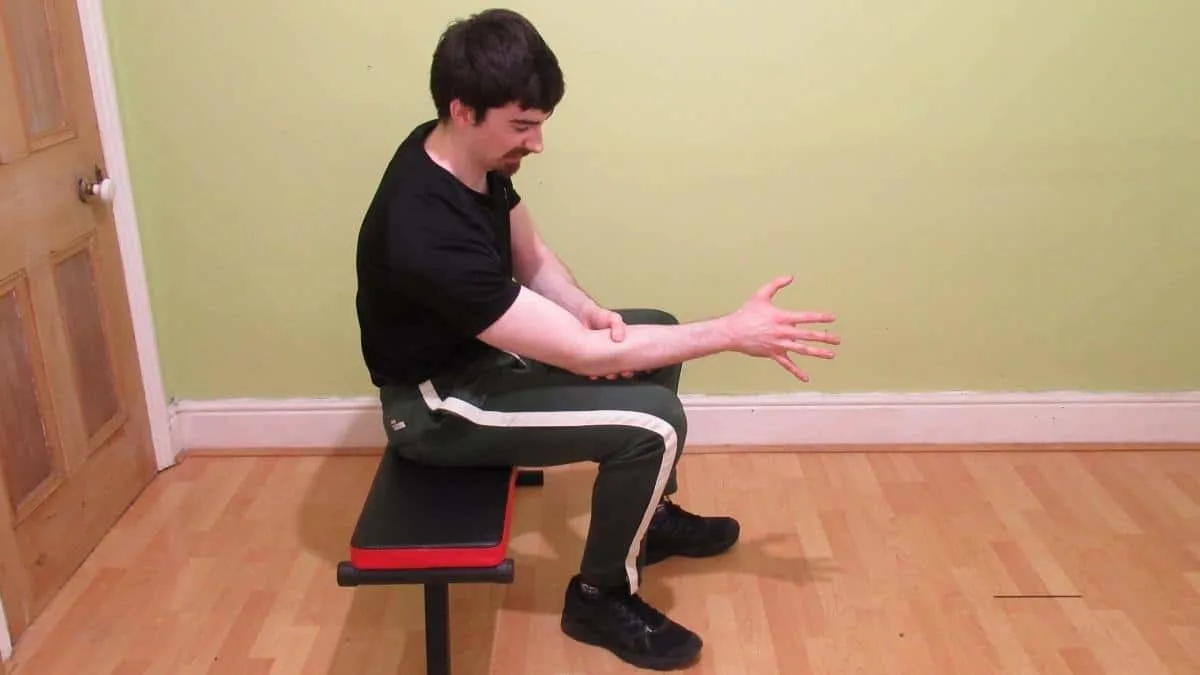The muscles of the forearm are numerous, so it’s highly likely that you’ll injure one at some point during your lifting career. And the brachioradialis is no exception.
Actually, since the brachioradialis is one of the main elbow flexors, we use it a lot during our everyday lives, so it’s actually a pretty common muscle to injure.
If you have brachioradialis pain from lifting weights or from performing manual labor, then I’m going to show you how to ease the discomfort with some simple yet effective tips.
Related posts
What causes brachioradialis pain after lifting?

The brachioradialis is one of, if not the strongest muscle in the forearm. And while you might think that this impressive characteristic would protect it from injury, often, the opposite is true.
As a powerful elbow flexor, the brachioradialis is regularly called upon when moving heavy objects at work, or lifting weights in the gym.
However, when lifting awkward objects, such as furniture, the brachioradialis has to work extra hard if you don’t also use your other muscles to maneuver the object.
Put simply, if your brachioradialis isn’t very strong, or has insufficient strength to lift a particular object, then it’s much more likely to become injured than if it was already appropriately strengthened via something like weight lifting.
Also, you might experience brachioradialis muscle pain if you don’t adequately warm up before lifting weights. Now, with resistance training, this is an easy mistake to rectify. But what about if you’re moving furniture or something?
It’s not like you can just pause and perform a warm up if you need to lift some object now.
In this case, it’s advisable to recruit an extra pair of hands to help you move the object. Alternatively, there are special furniture moving devices that can help you to lift heavy objects without causing brachioradialis pain.
More pain-related posts
- Pull up forearm pain
- Forearm pain when curling
- Forearm rehabilitation exercises
- Fibromyalgia forearm pain
- Forearm cramping
Why do I have brachioradialis pain when curling?

If you’re experiencing brachioradialis after bicep curls or brachioradialis pain while curling, then the first step is to audit your technique. Are you really using the proper form?
Remember, as an elbow flexor, the brachioradialis isn’t just active in isolation exercises like hammer curls. [1] It’s used in compound movements like pull ups and rows, as well. So if you’re relying too much on your arms and not enough on your back during pulling exercises, then you might well have just identified the source of your brachioradialis pain.
Now, if you’re sure that curls specifically are what’s causing your brachioradialis pain (not just the fact that it hurts during curls as a result of something else), then you should immediately stop performing the exercise. This also goes for any other forearm strains.
Then, once the discomfort subsides and you no longer feel any brachioradialis pain while lifting, you can start doing curls again, but keep things light. After all, if you’re using primarily low reps (and thus heavier weights) for your curls, then that could well be the source of your problem.
Brachioradialis pain treatment options
The first step to curing any pain in your brachioradialis is to rest the muscle. If the pain then subsides, you’ll know that simply resting it was enough. However, if you continue to experience brachioradialis muscle pain, then you can try these treatments.
RICE

Performing rest, ice, compression, and elevation for your brachioradialis can help speed up recovery and also make any brachioradialis pain symptoms that you’re experiencing less intense.
Begin by simply resting the muscle. Don’t perform any lifting or repetitive motions.
Then, ice the muscle a couple of times per hour to keep the swelling down (if you have swelling, that is). It’s best to ice the muscle soon after you first get the injury. But if you have any kind of brachioradialis pain, then icing the muscle is still advisable.
Compressing the muscle slightly with a bandage or some floss bands can also help to decrease the swelling. Just make sure to keep the compression loose—you don’t want to cut off the blood supply to an injured muscle.
Finally, be sure to elevate your brachioradialis to keep the swelling down. Also, check out these forearm stretches if you want to loosen up the muscles of your lower arm or help forearm splints, which can also occur from gym training.
Isometric exercises

These exercises won’t necessarily provide brachioradialis pain relief. However, once the discomfort has subsided, it’s best to start rehab and strengthening with isometric drills since they’re easy for the muscles to handle compared to dynamic contractions (i.e., curls).
Simply holding a pair of light dumbbells with flexed elbows is a great way to strengthen the brachioradialis. Also, if you think that dumbbells might be too much too soon, then you can also do this exercise without weights.
After all, even just supporting the weight of your forearms will provide some decent resistance if you’ve been out of action for a while.
You can also try myofascial release for the forearm with a foam roller if your physiotherapist thinks that you could benefit from this type of rehab.
Weight lifting exercises

Strength training is another good brachioradialis muscle pain treatment because it helps to decrease the likelihood of future injuries by making the muscle stronger.
Starting with hammer curls and reverse curls is the best idea because they more or less isolate the brachioradialis. Of course, you’ll also feel a fair amount of bicep activation, too, and that’s fine.
Begin by holding 2 dumbbells by your sides with a neutral hand position. Then, curl the dumbbells towards your shoulders until you feel a strong contraction in your brachioradialis. Aim to go just beyond 90-degrees.
Now, hold the contraction for a split second and then lower the dumbbells back down to your sides under control. This is a hammer curl.
To perform the reverse curl, simply do the same exercise but with a pronated (palms down) hand position.
Aim to do these exercise 2-3 times a week for rehab and 1-2 times per week for strength and muscle development (if you’re sufficiently recovered from the previous session).
See also
- Forearm pain from typing
- Forearm pain from gaming
- Pain in your forearm when gripping
- Pain in your forearm when lifting weights
- Tight forearms
How to minimize brachioradialis pain while lifting going forward
If you’ve had success with your chosen brachioradialis pain treatment, then strengthening the muscle is likely the best strategy for preventing future injuries. [2]
Think of the muscle like paper. As you build the muscle up, you’re making the fibers thicker and more tear-resistant. You might start out as a thin sheet of paper, but eventually, the fibers will grow thick like a phone book (which is very hard to rip), and so your brachioradialis will be much more injury resistant.
As always, if you’re experiencing brachioradialis pain while lifting, curling, or doing any kind of activity, your best bet is to consult with a qualified medical professional so that they can properly diagnose your condition (brachioradialis pain is often confused with tennis elbow).
Thanks for reading, and good luck on your road to recovery!
References
- Brachioradialis. (n.d.). Physiopedia. https://www.physio-pedia.com/Brachioradialis
- Lung, B. E., Ekblad, J., & Bisogno, M. (2020, August 10). Anatomy, Shoulder and Upper Limb, Forearm Brachioradialis Muscle. National Center for Biotechnology Information. https://www.ncbi.nlm.nih.gov/books/NBK526110/
- OcraMed Health. (2019, February 10). Forearm Pain Relief By Brachioradialis Fascial Release [Video]. YouTube. https://www.youtube.com/watch?v=K-Dq4jfjBcU

